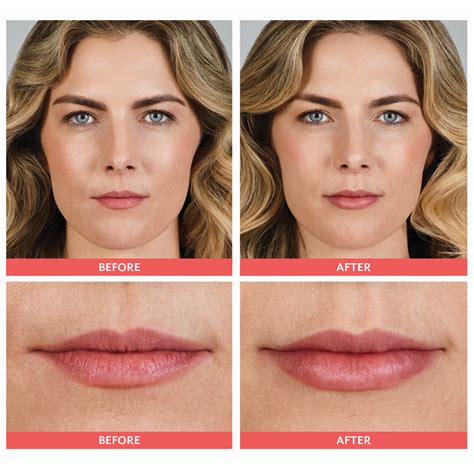Age & Lip Fillers: What You Need to Know
Lip fillers have become increasingly popular, offering a non-surgical way to enhance lip volume and shape. However, age plays a significant role in how well lip fillers work and the overall results. Understanding the interplay between age and lip fillers is crucial for making informed decisions and achieving optimal outcomes. This comprehensive guide explores the relationship between age and lip fillers, addressing common concerns and questions.
What are Lip Fillers?
Lip fillers are injectable dermal fillers, typically composed of hyaluronic acid (HA). HA is a naturally occurring substance in the body that attracts and retains water, providing volume and hydration to the skin. When injected into the lips, HA fillers plump the lips, smoothing out wrinkles and creating a fuller, more defined shape. The effects are temporary, typically lasting anywhere from 6 to 18 months, depending on the individual and the product used.
How Does Age Affect Lip Fillers?
As we age, our bodies produce less collagen and elastin, leading to a natural loss of volume in the lips. This results in thinner lips, deeper lip lines (vertical lines above the lip, also known as smoker's lines), and a less defined lip border. This age-related lip volume loss significantly impacts the results of lip fillers.
H2: Do lip fillers work better on younger or older individuals?
There's no single definitive answer to this. While younger individuals may require less filler to achieve desired results due to having more inherent collagen and elasticity, older individuals often benefit greatly from lip fillers. In older patients, fillers can not only add volume but also improve the overall lip structure and support, helping to soften the appearance of wrinkles and restore a more youthful look. The key is choosing the right filler and technique based on the individual's age and specific needs. A skilled injector can tailor the treatment to address age-related changes effectively.
H2: Are there different types of fillers for different ages?
While there aren't fillers specifically labeled for different age groups, injectors often select fillers based on the patient's age and the desired outcome. For instance, thinner, less viscous fillers might be preferred for younger patients seeking subtle enhancements. For older patients with significant volume loss and deeper wrinkles, thicker, longer-lasting fillers might be more suitable. The concentration and type of HA also play a role.
H2: What are the potential risks and side effects of lip fillers at different ages?
The risks and side effects of lip fillers are generally similar across age groups. These can include:
- Bruising and swelling: This is common and usually resolves within a few days.
- Infection: Although rare, proper hygiene and post-treatment care are essential.
- Lumps or bumps: These can sometimes occur and may require correction.
- Asymmetry: Ensuring skilled injector technique minimizes this risk.
- Allergic reactions: While rare with HA fillers, allergies can occur.
In older individuals, the skin's ability to heal might be slightly slower, potentially leading to a slightly longer recovery period. It's crucial to discuss potential risks and side effects thoroughly with your injector before the procedure, regardless of age.
H2: How long do lip fillers last at different ages?
The longevity of lip fillers isn't significantly affected by age, but individual factors like metabolism and lifestyle can influence how long the results last. Generally, HA fillers typically last 6-18 months, requiring repeat treatments to maintain the desired results.
H2: Can lip fillers help address age-related changes in the lips other than volume loss?
Yes. Beyond adding volume, skilled injectors can utilize lip fillers to:
- Improve lip definition: By strategically placing filler, the lip border can be redefined, creating a more youthful and well-defined shape.
- Reduce the appearance of lip lines: Filler can help fill in these lines, softening their appearance.
- Enhance lip symmetry: Fillers can be used to correct any asymmetry in the lips, resulting in a more balanced and harmonious look.
Choosing a Qualified Injector
Selecting a qualified and experienced injector is paramount, regardless of age. Look for a board-certified dermatologist, plastic surgeon, or other qualified medical professional with extensive experience in administering lip fillers. Consultations are essential to discuss your goals, expectations, and any potential risks. Review before-and-after photos and testimonials to assess the injector's skill and artistry.
Choosing lip fillers is a personal decision. By understanding the role age plays in the process and carefully selecting a qualified professional, you can make an informed choice and achieve natural-looking, satisfying results. Remember that open communication with your injector is key to a successful outcome.

